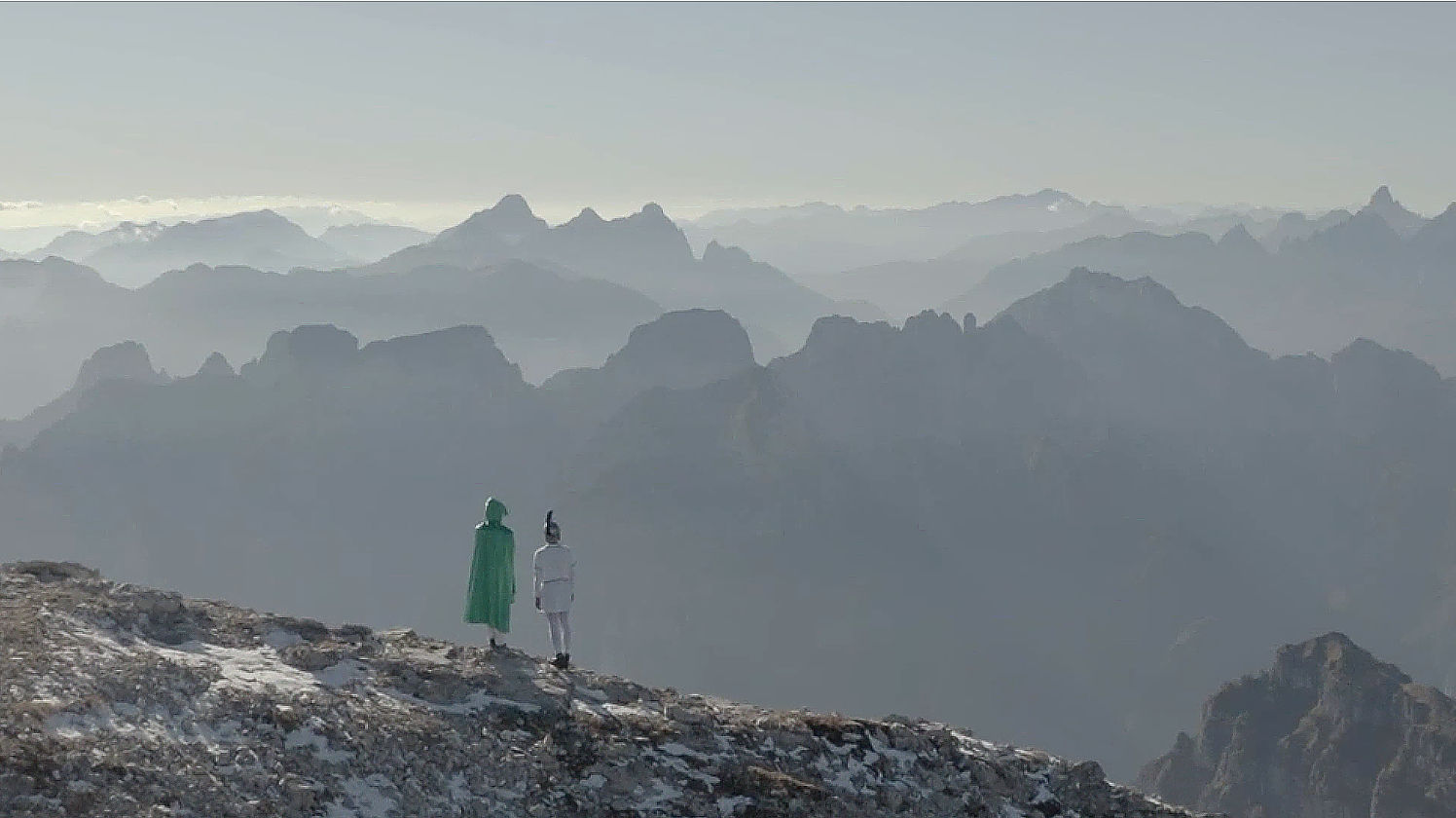
On the paths of Europe 2024
The events
Guided by theologians, historians, forest rangers and fishermen, we will walk from Carinthia to the Absirtides in search of Europe. The performers and the audience, on the move and in dialogue: starting from the experience of the body - which walks and sees, listens, touches, dances, sings, writes - and from the traveling performance On the Paths of Europe, we will build together, here and now, in the margins, a better idea of Europe.
The performance will be preceded by the talk "The walking body" with Angelo Floramo, Špela Ledinek Lozej and Emil Krištof. Chairperson: Anton Špacapan Vončina.
The former hotel of the former railway station of the former Ljubljana-Tarvisio railway line dividing the watershed between Drava and Sava, between the Slavic-speaking agro-pastoral community of Rateče and the German-speaking mining community of Weißenfels, with a redundant Italy and a magnificent kozolec around the corner.
The performance will be preceded by the talk "Between two rivers" with Nadja Velušček, Anja Medved and Zdravko Likar. Chairperson: Anton Špacapan Vončina.
The Kobarid of the First World War, defeat or miracle depending on your perspective, but also of the Second World War, with the first partisan republic that saw Italians and Slovenians unite together. First of all though, the intersection of two valleys, that of the Soča and that of the Nadiža, which has always been a place of transit between Aquileia and Carinthia, Venice and the Empire, the Mediterranean and the continent.
The performance will be preceded by the talk "Once upon a time in Gorizia" with Hans Kitzmüller, Renato Podbersič and Anja Medved. Chairperson: Anton Špacapan Vončina.
Where up until the day before yesterday it was only the cart road to Vienna that went up a valley of roses, today it’s a mishmash of roundabouts, overpasses, petrol pumps and Casino Royal. The only steady point in the tumult of jackpots, pretentious car engines and breathtaking necklines on the billboards with a three rotating faces' prismatic support, is the ancient Jewish cemetery, and inside the cemetery a boy denouncing rhetoric.
An ancient fortress without anymore walls, suspended between a Sea Gate and a Golden Gate. Just outside are the typical fishermen's houses made of wood, straw and marsh reeds. All around are lagoon, sandbanks and egrets. Forgotten in the mud of the seabed are terracotta pipes in the shape of a Turk's head, complete with a turban and mustaches
The performance will be preceded by the talk "Afroasiatic Aquileia" with Andrea Bellavite, Gian Paolo Gri and Giorgio Banchig. Chairperson: Mattia Cason.
The last remnants of pine forest on the sand dunes overlooking the Grado lagoon, there where in ancient times similar woods covered the entire coast at least up to the Timavo. On a dune the small church of San Marco, where legend has it that the evangelist from Alexandria arrived to begin his catechetical work. A little further in, going up the course of a river, a basilica with a mosaic floor beyond belief.
The performance will be preceded by the talk "The Balkan route" with an introduction by Claudio Magris and the participation of Egidio Ivetić and Roberta Altin. Chairperson: Mattia Cason.
The central railway station inaugurated in the presence of Franz Joseph. Opposite is the monument to his wife Sissi, stabbed to death by an anarchist. While some volunteers give the migrants coming from the Balkan Route a hot meal, a barrier is there to prevent anyone from mixing with the blue blood of the empress.
The performance will be preceded by the talk "Afroasiatic Aquileia" with Andrea Bellavite, Gian Paolo Gri and Giorgio Banchig. Chairperson: Mattia Cason.
The last remnants of pine forest on the sand dunes overlooking the Grado lagoon, there where in ancient times similar woods covered the entire coast at least up to the Timavo. On a dune the small church of San Marco, where legend has it that the evangelist from Alexandria arrived to begin his catechetical work. A little further in, going up the course of a river, a basilica with a mosaic floor beyond belief.
The Rosandra stream marks the border between Karst and Istria, among cliffs, screes and sheer walls. Above the cliffs are prehistoric Castellieri, the usual anti-Ottoman fortress and a small church for penitent cursers. In the village is Ferruccio, who despite his clear progressive orientation, ends up cursing too, when passing migrants steal his watermelons.